Contents
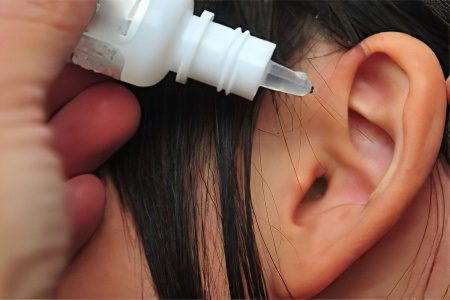
Otitis media is an inflammation that develops in one part of the ear. The disease is widespread in all age groups.
An otolaryngologist, or in other words, an ENT doctor, is engaged in competent treatment of the disease. Local treatment of the disease consists in the use of special turundas impregnated with special medicines for the ear, drops, and also compresses. As a rule, in parallel with local treatment, the doctor prescribes broad-spectrum antibiotics, the so-called universal antibacterial drugs, to the patient.
List of ear drops from otitis media
There are 3 groups of ear drops effective in the fight against otitis media:
Combined. They are based on glucocorticoids (polydex, garazon, sofradex, dexon, anauran).
Drops, which contain one anti-inflammatory substance, the so-called monopreparations (otinum, otipax).
Antibacterial drops (tsipromed, otofa, fugetin, normaks).
Ear drops “Anauran”
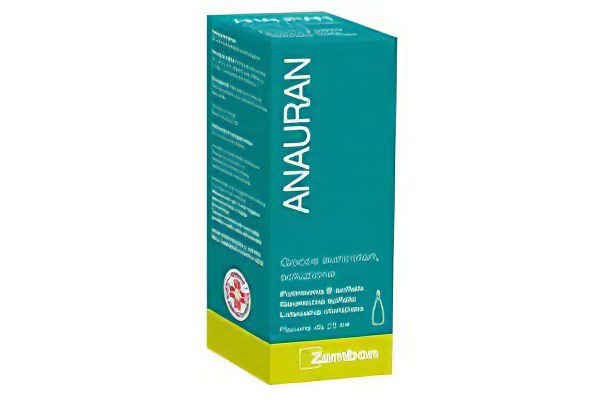
Anauran – antibacterial ear drops of complex effects from an Italian manufacturer. They are used in the case of an inflammatory process in the middle ear, in acute and chronic otitis media. The medicine is injected into the ear with a special pipette. The drug helps to actively fight otitis in adults (five drops in the morning and evening) and babies (three drops in the morning, afternoon and evening). For women in position and children under one year old, drops are prescribed extremely rarely, only in case of urgent need. Side effects from the use of the drug: peeling at the site of application of the drug, itching and burning sensation. The risk of developing other side effects is very low due to the use of a small amount of the drug.
Pros
Anauran effectively and quickly eliminates ear pain, relieves inflammation and promotes the resorption of pus. A few days after the start of treatment, otitis media can be forgotten.
Anauran has not just an analgesic effect, it fights the cause of inflammation in the ear, namely, the bacterial flora. This is very important, because an excessively large accumulation of pus in the middle ear is dangerous with a rupture of the eardrum and its spread to the cerebral cortex.
Another plus of Anauran is that it acts locally, that is, it works only in the ear. In this case, the antibiotic does not enter the body.
As part of the drug, broad-spectrum antibiotics – Polymyxin B sulfate and Neomycin sulfate. They are active against most Gram-positive and Gram-negative bacteria. With the help of ear drops, you can suppress the growth of fungi, staphylococci and streptococci.
The analgesic effect of Anauran is achieved due to Lidocaine, which is part of the drops. This is a time-tested anesthetic that quickly and efficiently relieves pain.
Anauran has many positive reviews from people who have used it to treat acute and chronic otitis media. The drug is often prescribed by doctors for the treatment of postoperative purulent complications of the hearing organs.
Drops do not require any thorough preparation before using them. It is enough to clean the ear with a cotton flagellum dipped in hydrogen peroxide. For better processing, cotton wool can be left in the ear for 5 minutes.
It is convenient to use a bottle of medicine, as it is equipped with a special dispenser, which allows you to accurately count the number of drops. As a rule, one package is enough for a full course of treatment for both children and adults. Children are instilled 2-3 drops, 3-4 times a day. Adults instill 4-5 drops 2-4 times a day. For pregnant women, only a doctor can choose the dosage.
The medicine has a thick consistency, so it is brought into the ear lying down. Then, for a certain time, it is necessary not to change the position so that the drug is evenly distributed over the membrane. If a person does not have time for this, then you can apply drops to a cotton tourniquet and insert it into the ear canal. Thus, it will be possible to relieve acute pain and it will be possible to visit a doctor on your own.
The advantage of Anauran drops is that they have a rather long shelf life, which is 3 years and do not require them to be placed in the refrigerator. The drug can be stored in a home medicine cabinet at room temperature. It is noteworthy that even after opening, Anauran retains its therapeutic effect for another 3 months.
Cons
Anauran is not a completely harmless drug and can only be used as directed by a doctor. Drops are used with caution to treat children and pregnant women.
Drops can not be used simultaneously with drugs such as Gentamicin, Amikacin, Streptomycin, Monomycin, Netilmicin.
Another disadvantage of the drug Anauran is the inability to use it in all patients. The fact is that drops have certain contraindications. Among them: the age of less than a year, the period of pregnancy and lactation (prescribed extremely rarely).
The use of drops can provoke the development of allergic reactions. You can suspect an allergy by itching in and around the ear, the skin of the outer ear may turn red and begin to peel off. In this case, you can not continue to use the drops.
Anauran is not instilled into the ear if the tympanic membrane has ruptured. This is dangerous by the development of inflammation and the spread of the drug to the auditory nerve.
Another disadvantage of drops is that viruses and bacteria can develop resistance to it. Although most often this happens with too long a course of treatment. Therefore, it is not recommended to use the drug for more than a week.
Ear drops “Sofradex”
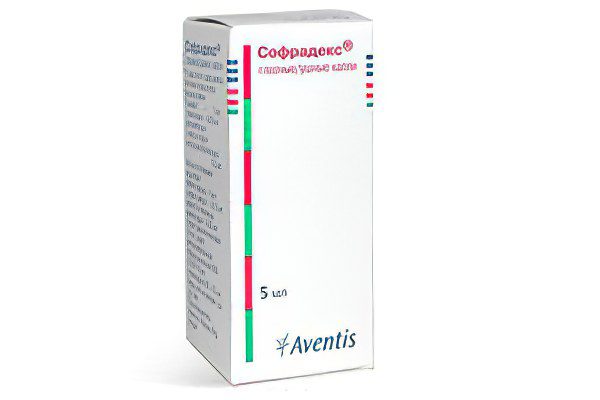
Sofradex – ear drops for the treatment of otitis with an antibacterial component in the composition. They are used not only in otolaryngology, but also in ophthalmology. This drug has an effective anti-inflammatory, anti-allergic, as well as antibacterial action. The recommended dose in cases of otitis media is 3 drops four times a day. Exceeding this limit is strictly prohibited. Side effects from the use of Sofradex drops are local allergic reactions (pain in the ear canal, itching, burning). Contraindications: the drug is not recommended for use by pregnant and lactating women, children under one year old, people with renal or hepatic insufficiency.
Pros
The first advantage of Sofradex drops is that it is a combined action drug. Therefore, if after the treatment of otitis a person has drops left, then they can be used to get rid of sinusitis, adenoids, barley and other diseases of the eyes or nose.
It is noteworthy that drops are produced by such a famous pharmaceutical corporation as Sanofi, which has been operating in this market for several decades.
The undoubted advantage of Sofradex drops is the presence in the package of a special pipette, which is put on the bottle with the drug. This allows you to accurately dose the drug.
The advantage of Sofradex drops is their complex effect on the sore ear. So, the drug acts as an anti-inflammatory, antibacterial and antihistamine. As a result, pain disappears in a person, swelling and itching in the ear decrease, the bacteria that caused the disease die.
The components included in the preparation (Gramicidin and Framycetin) are able to destroy even such dangerous pathogens as Staphylococcus aureus, Streptococcus and E. coli.
Due to Dexamethasone, an anti-allergic effect is achieved, the severity of inflammation decreases, swelling subsides and pain disappears. This is very important for otitis media, since pain is sometimes quite intense.
Separately, it is worth noting such a positive effect from the use of drops as the elimination of ear congestion.
Another advantage of the drug is the possibility of its use for the treatment of otitis not only in adults, but also in children. This is very important, since it is in childhood that otitis occurs especially often. However, there are some nuances here. If the drug is directly instilled into the ear of an adult, 2-3 drops in each passage, after which it is closed with cotton wool, then the drug should be administered to children a little differently. So, drops are applied to a cotton turunda, which is carefully inserted into the ear canal. Turundas are changed every 3 hours.
The advantage of the drug Sofradex in the treatment of otitis media is that, subject to the dosage and timing of treatment, it practically does not cause side effects.
Cons
The downside of the drops is their short shelf life, which after opening the bottle is only 30 days. After this time, the unused part of the drug must be disposed of.
Another drawback of the drug is that bacteria are able to develop resistance to its components. Therefore, it is not recommended to continue treatment for more than 10 days. If you use the drug for 14 days, then the risk of a fungal infection is significantly increased, which is associated with an imbalance in the microflora in the ear.
The disadvantages of Sofradex drops include the fact that they can provoke the occurrence of unwanted reactions. It could be an allergy with redness and itching of the skin.
Although ear drops are approved for the treatment of children, the drug can be used under the age of one year only under medical supervision. They are strictly forbidden to be used for the treatment of otitis media, accompanied by a violation of the integrity of the eardrum. This can lead to the fact that the drops fall into the middle ear and in the future the person will develop a permanent hearing loss in the form of hearing loss.
Ear drops “Otipax”
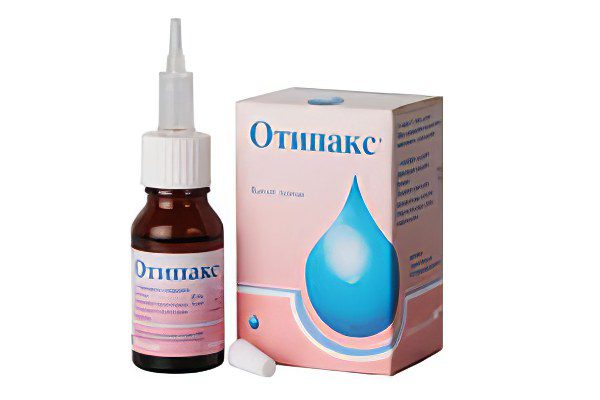
Otipax – ear drops with Lidocaine and Phenazone. They have a pronounced analgesic and anti-inflammatory effect. Recommended for use by adult patients, including pregnant women, as well as by children. Most effective at the very beginning of the development of the disease. Side effects include an allergic reaction to the substance lidocaine in the composition of the drug. Also, the disadvantages of this medicine include the absence of a local antibacterial component in it.
Pros
The main advantage of the drug is that it effectively and quickly eliminates pain in otitis media, and also relieves inflammation in the ear. It can be used for the treatment of otitis media and suppurative otitis media, which has an acute or chronic course, as well as for the treatment of eustachitis.
Another advantage of the drug is the possibility of its use for the treatment of children. Moreover, pediatricians and pediatric otolaryngologists most often prescribe Otipax for otitis in a child. The components included in its composition act in a complex manner, which allows you to get rid of the disease in the shortest possible time. Otipax can be used to treat even newborn children.
The speed of achieving an analgesic effect when using Otipax drops is very high. So, the pain almost completely disappears after 15-30 minutes.
The drug is absolutely safe for the treatment of not only adults, but also children, since when used locally, it does not enter the systemic circulation.
The drug is very convenient to use, as the medicine bottle is equipped with a transparent long pipette. Therefore, a person sees how many drops he injects into the ear. It is recommended to instill 3-4 drops into each ear canal, 2-3 times a day.
The drug, when used correctly, does not give side effects, but before using it, you should consult a doctor. Before instillation, the drug must be held in the palms of your hands to warm it.
Otipax can be used to treat lactating and pregnant women, which is its undoubted advantage.
Another advantage of Otipax drops can be considered their long shelf life after opening the bottle. So, the unused substance will need to be disposed of only six months after the violation of the integrity of the package.
The drug can be used in combination with other drugs, since there are no data on its interaction.
Otipax drops do not require a certain temperature regime for storage, so they can be taken with you to work or on a trip, which is very convenient. The main thing is that the ambient temperature does not exceed +30 °C.
Cons
The drug can not be used alone, without prior medical examination. This is very important, because when the eardrum is perforated, drops can penetrate into the deep sections of the ear and cause damage to the auditory nerve, which will further lead to the development of hearing loss.
Sometimes allergic reactions occur on Otipax, which is also a disadvantage of this drug. Therefore, if you experience a burning sensation or itching in the ear, you must stop using it and consult a doctor.
The drug should not be used for more than 10 days, as this threatens the development of addiction of the body. As a result, the effect will not be obtained.
There is no antibacterial component in the drops, which can also be attributed to disadvantages.
Drops for ears “Otinum”

Otinum are ear drops from the NSAID group. Recommended for patients with inflammatory processes of the middle ear. The optimal dose of medication is three drops three times a day. The occurrence of allergies during the use of the drug “Otinum” is very rare. These drops are not recommended for use by patients with disorders in the eardrum. This is due to the fact that salicylic acid in the composition of the drug, if it comes into contact with a damaged surface, can provoke hearing impairment.
Pros
The main advantage of the drug is its pronounced analgesic and anti-inflammatory effect. It also acts as an antiseptic, fights fungi and microbes. Thus, we can conclude that Otinum is a drug with a complex effect.
It is noteworthy that drops can be used to treat not only otitis media, but it is also prescribed for other infectious diseases of the middle ear, mucous membranes of the oral cavity and nasopharynx. The drug quickly helps to get rid of sulfur plugs. Due to its antiseptic properties, Otinum is used to cleanse the ears of children. All these qualities can be attributed to the advantages of the drug.
The bottle with drops is equipped with a dispenser, so it will be easy to instill the drug into the ear canal. Moreover, it is necessary to dose the drug in drops (4 drops, 4 times a day).
The advantage of the drug is that it can be used to treat children, but only after the age of one year.
Cons
Otinum is not used for more than 10 days, as hearing loss is possible, which is a minus of the drug.
The disadvantages of the drug can also be attributed to its mild anesthetic effect. Otinum relieves pain, but moderately.
Another disadvantage of the drug is its short shelf life. So, after opening, Otinum can be used only for 28 days, but no more. Therefore, if a person has an unused substance, he will have to dispose of it. There will be no effect from treatment with an expired drug.
It is worth noting another drawback of drops: they can be used to treat only a limited group of patients. You can not use Otinum in children under one year old, in pregnant women and nursing mothers.
Otinum is not a drug for self-medication. It is important that the doctor examines the patient and makes sure that the eardrum of the ear canal is not damaged. Otherwise, the drug can provoke the development of hearing loss.
The last minus of drops is the presence of side effects, including: allergic reactions, acute rhinitis, urticaria, bronchial asthma, nasal polyps.
Normax (norfloxacin)

Normax – antibacterial ear drops belonging to the group of fluoroquinolones, which has a wide antibacterial field of action. Drops are effective in the fight against otitis externa, otitis media, which are chronic or purulent. Side effects include small rashes on the skin, unpleasant sensations of itching and burning at the site of use of the drug, Quincke’s edema. The development of any allergies while taking the drug involves the immediate cessation of its use and contacting a doctor.
Pros
The main advantage of Normax drops is that they have a pronounced antibacterial effect and help to effectively fight various gram-positive and gram-negative bacteria.
Another plus of Normax drops is that they are used not only for otitis media, but also for eustachitis, for the prevention of ear infections after surgery, or after removing a foreign body from the ear canal. That is, Normax – drops with high antibacterial activity.
It is convenient that in the package with drops there is a plastic dropper cap, which allows you to dose the drug without any problems. This is important, since the maximum single dose is only 1-2 drops. It is noteworthy that the cap can be removed and disinfected.
The drug is easy to take with you and use outside the home, as it does not require maintaining a certain temperature even after opening the vial.
Cons
The main disadvantage of the drug is its toxicity, although insignificant.
Another disadvantage of the drug is that it cannot be used to treat children and adolescents under the age of 18 years. Also, the drug is not prescribed to pregnant and lactating women.
The disadvantages of Normax drops include the fact that they cannot be combined with physically and chemically unstable drugs with a pH of 3-4.
A significant disadvantage of Normax drops is the presence of contraindications, including: allergic reactions, including Quincke’s edema, headaches, sleep disturbances, dizziness, irritability, nausea, heartburn, diarrhea and abdominal pain.
The last disadvantage of Normax drops can be considered their short shelf life after opening, which is only a month.
Ear drops “Otofa”
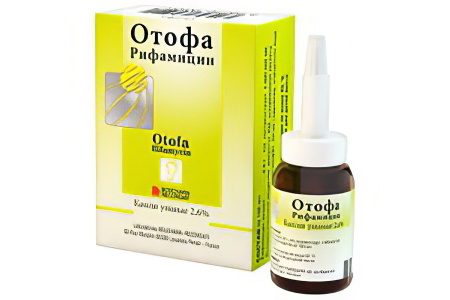
Otofa – antibacterial drops from the group of rifamycins. A very effective antibacterial drug used in the case of acute and chronic diseases of the middle ear. Drops have a wide area of action and can be used in case of perforation (violation of integrity) of the eardrum. The drug has no analgesic properties, is not recommended for use by pregnant women and during lactation.
Pros
The main advantage of Otofa drops is that they have a wide spectrum of antibacterial activity. Thanks to this, the treatment of otitis media occurs quickly and effectively.
The bottle is equipped with a convenient pipette, which allows you to accurately dose the drug.
The drug has a minimal set of side effects, which is its undoubted advantage. Only in rare cases does it cause allergic reactions.
Another positive property of the drops is that they are practically not absorbed into the systemic circulation when used locally. This means that the drug is harmless to children and pregnant women. However, before starting treatment, it is necessary to consult a doctor.
Separately, it is worth noting such a plus of drops as their long shelf life. It is three years. In this case, the drops remain valid throughout the specified time, regardless of whether they were opened or not. This means that the drug can be reused.
Another advantage of Otofa drops is that they can be used for perforation of the eardrum.
Cons
The disadvantage of Otofa drops is that they are unable to reduce pain in otitis media, since they do not contain either an anesthetic or an anti-inflammatory component.
The disadvantages of the drug include the fact that they are forbidden to be used to treat pregnant and lactating women.
The drug should not be used for more than 7 days, as bacteria will develop resistance to it.
Another disadvantage of the drug is that when it gets on clothes, it leaves yellow stains.
Candibiotic
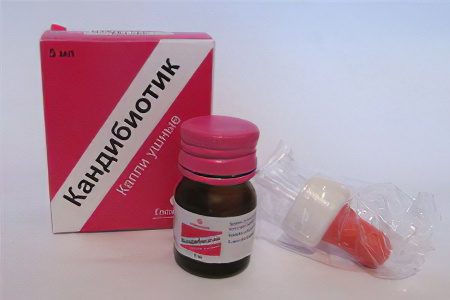
Candibiotic is a drug for the complex treatment of otitis media. Drops effective in the fight against otitis media and otitis externa. The medicine contains a number of substances effective in the treatment of otitis media: beclomethasone dipropionate, lidocaine hydrochloride, chloramphenicol, clotrimazole. The last antifungal element, clotrimazole, is an important feature of this drug. Side effects include the possible occurrence of allergic reactions. Not recommended for use by pregnant women, women during lactation, and children under 6 years of age.
Pros
The main advantage of the drug is that it contains all the components that are necessary for the effective treatment of otitis media. Thanks to chloramphenicol, an antibacterial effect is achieved, since this substance has a wide spectrum of action and is active against both gram-positive and gram-negative bacteria. There is a glucocorticosteroid in the drops, which has an anti-allergic and anti-inflammatory effect.
During treatment with Candibiotic, a fungal infection will not develop, since the drug contains Clotrimazole, which effectively fights mycotic microorganisms. This is another advantage of drops.
Another plus of the drug is the rapid elimination of pain. This is possible due to the fact that Candibiotic contains Lidocaine, which is a strong anesthetic.
It is very convenient that the drug is equipped with a pipette, which allows you to dose the drug.
A significant advantage of Candibiotic drops is that they can be used in combination with other drugs. In addition, the drug can be treated for two years, such is its shelf life. It does not matter whether the integrity of the drug vial has been violated.
Cons
A significant disadvantage of the drug is the presence of side effects, among which allergic reactions are most common.
Also, the disadvantages of Candibiotic drops include restrictions on their use. The drug is not used to treat pregnant and lactating women, as well as to treat children under 6 years of age.
Self-administration of the drug is unacceptable, since it cannot be instilled if the integrity of the eardrum is violated. Therefore, the ear of the patient must be examined by a doctor.
Antibiotics for otitis media
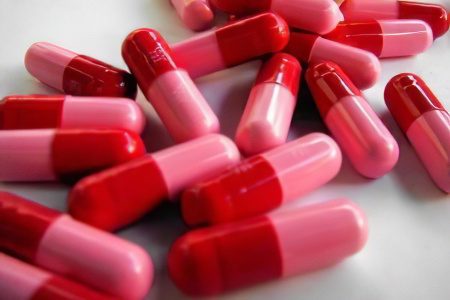
In order to achieve the most positive effect of treatment, it is recommended to combine ear instillation with antibiotics. At the same time, antibacterial drugs, like drops in the ears, are prescribed exclusively by a doctor after a thorough examination of the patient and a diagnosis. Which medicine will be prescribed depends on the localization of the inflammation in the ear.
In the fight against acute otitis media, drugs are involved:
Amoxicillin – a universal antibiotic with pronounced bactericidal and antibacterial properties. Capsules of the drug are used on the recommendation of the attending physician, as a rule, three times a day after meals. The average duration of taking the medicine is 7 days. Possible negative consequences caused by the drug are the manifestation of allergies, the occurrence of superinfections.
Ampicillin trihydrate – an antibacterial drug that is part of the group of semi-synthetic penicillins. Release form – capsules, powder, tablets. It is not recommended to take pregnant, nursing mothers, patients suffering from renal insufficiency. Also, the drug can provoke the appearance of allergic reactions, headaches, diarrhea. Very rarely, but still recorded cases of anaphylactic shock.
To combat chronic otitis media involved:
Ciprofloxacin – a universal antibiotic that is part of the fluoroquinolone group. Quite common in the practice of doctors in many European countries. The medicine should not be taken by children and pregnant women. The use of the drug during lactation implies the abolition of feeding for the period of taking the medicine. Possible side effects: insomnia, fatigue, diarrhea, urticaria, nausea, dizziness, candidiasis, tachycardia.
Netilmicin – an antibacterial drug that is part of the aminoglycoside group. Method of application – local ear injections. The duration of taking the drug is determined by the attending physician and directly depends on the degree of development of the disease (on average, no more than 14 days). Possible adverse reactions are various manifestations of allergies. The medicine is not recommended for use by the elderly, pregnant and lactating women.
Do not forget that all of the above drugs can provoke dysbacteriosis, in this regard, it is recommended to use probiotics in parallel with antibiotics.
Amoxicillin

Amoxicillin is a broad-spectrum antibiotic that is effective against most of the bacteria that cause otitis media. It belongs to the antibiotics of the penicillin series.
Pros
Amoxicillin is a time-tested antibiotic. It is a safe drug that is widely used in pediatric practice. Otolaryngologists also often recommend its use for the treatment of chronic and acute otitis media in children and adults.
Another advantage of Amoxicillin is the possibility of its use for the treatment of otitis media in children. For pregnant and lactating women, the drug is prescribed with caution.
The advantage of Amoxicillin in the treatment of otitis is that it needs to be taken only three times a day, since the drug has a prolonged bactericidal effect.
Conveniently, you can choose the appropriate form of the drug for different ages. So, the drug is available in powder form for the preparation of a suspension, in the form of tablets and capsules.
Cons
A significant disadvantage of Amoxicillin in the treatment of otitis media is that many strains of bacteria have developed resistance to it and do not respond to therapy. As a result, it will not be possible to get rid of the disease.
Another disadvantage of Amoxicillin is the presence of contraindications to its oral administration. For example, it is not prescribed for bronchial asthma, severe infections of the gastrointestinal tract, allergic diathesis and other diseases.
It is worth noting separately such a lack of Amoxicillin in the treatment of otitis media as the likelihood of side effects. After all, the drug will have to be taken orally, which means that it will have a systemic effect on the entire body. Among the possible undesirable effects: severe allergic reactions, various disorders of the digestive tract.
The drug is able to interact with other drugs and lead to the development of serious complications. So, when combined with Metronidazole, the development of vomiting, anorexia, hepatitis, etc. is possible. Therefore, its independent use is unacceptable. You must first consult with a doctor.
Ampicillin trihydrate
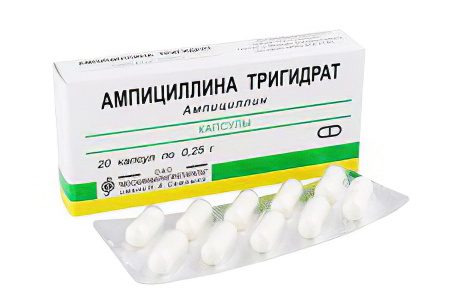
Ampicillin trihydrate is an antibacterial drug with a wide spectrum of action. Ampicillin trihydrate belongs to the beta-lactam penicillins. With otitis, it inhibits the synthesis of cell walls of bacteria that provoked the development of the disease.
Pros
The drug has a wide spectrum of action, so it can help with otitis media caused by gram-positive and gram-negative strains of bacteria. This is its main advantage. If the pathogenic flora is sensitive to the drug, then the patient’s condition improves after a day. The drug is used to treat acute purulent and prolonged chronic otitis media.
The second significant advantage of Amoxicillin is that it can be used to treat children over the age of 4 years. As for pregnant women, the drug is prescribed to them only in case of emergency.
The third advantage of the drug is its low price. So, tablets can be purchased for 65-100 rubles.
Cons
One of the disadvantages of the drug is that it is not effective against penicillin-forming bacteria, since it itself is destroyed by penicillinase. Therefore, treatment may not be effective.
Another disadvantage of the drug is the presence of an extensive list of side effects. Treatment of otitis media may be accompanied by the development of allergic reactions, fever, joint pain, eosinophilia. Manufacturers of the drug do not exclude that the patient may even experience anaphylactic shock. This also includes nausea, vomiting, dysbacteriosis, pseudomembranous colitis, interstitial nephritis and some other complications.
The third disadvantage of Ampicillin trihydrate is its drug interaction with other drugs, against which side effects may increase. For example, the likelihood of a skin rash increases with the simultaneous use of Ampicillin with Allopurinol. The toxic effect of Ampicillin is enhanced when combined with Probenecid.
Ciprofloxacin
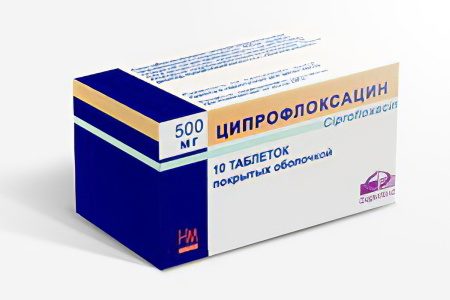
Ciprofloxacin is an effective fluoroquinolone antibiotic for the treatment of otitis media. The drug belongs to the broad-spectrum antimicrobial agents. The drug affects the bacteria that cause otitis in such a way that they disrupt the synthesis of cellular proteins and DNA replication, as a result, the microorganisms die.
Pros
The main advantage of the drug Ciprofloxacin is that it quickly and effectively kills the bacteria that cause otitis media. The drug has an equally detrimental effect not only on pathogenic flora at rest, but also on multiplying microorganisms. Due to this, the therapeutic effect is achieved very quickly.
Another advantage of the drug is its increased activity against gram-negative bacteria, since Ciprofloxacin belongs to the second group of fluoroquinolones.
It should be noted such a plus of Ciprofloxacin as the presence of various dosage forms. It can be used for parenteral administration and taken orally. Moreover, ciprofloxacin has been successfully used to treat elderly people with comorbidities.
It is impossible not to note such an important advantage of the drug as its high bioavailability when taken orally. The drug is generalized precisely at the site of inflammation, due to which recovery from otitis occurs very quickly.
It is necessary to note such a plus of the drug as its low price. It varies from 21-30 rubles.
Cons
A significant drawback of the drug Ciprofloxacin is that it is not effective against gram-positive microbes and against microbes resistant to methicillin. Therefore, if otitis is caused by this group of pathogenic microorganisms, then the therapeutic effect cannot be achieved.
Another disadvantage of Ciprofloxacin is the presence of side effects. Most often they are expressed in disorders of the digestive tract and central nervous system, allergic and phototoxic reactions. But the incidence of most adverse reactions does not exceed 10%.
It is worth noting such a disadvantage of Ciprofloxacin as the trend towards the development of resistance to the drug of staphylococci and gram-negative bacilli that has emerged in recent years. Therefore, if there is no effect in the treatment of otitis with Ciprofloxacin for 3 days or more, it is necessary to change the antibiotic.
To the disadvantages of the drug, one must add the fact that it cannot be used to treat children, therefore, in pediatric practice, it is not used to get rid of otitis media. It remains a reserve drug, which is used exclusively for severe life-threatening infections. Do not prescribe the drug to pregnant and lactating women.
Netilmicin
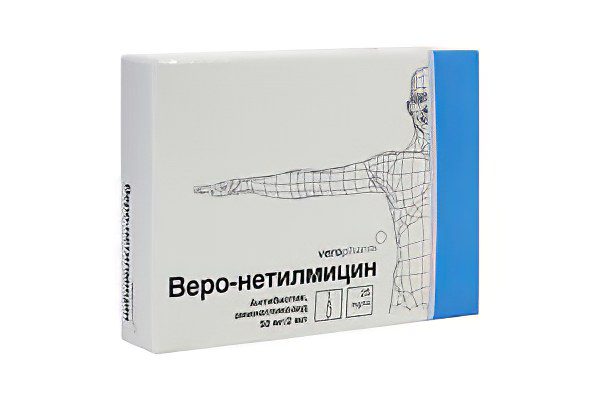
Netilmicin is an antibacterial drug belonging to the aminoglycoside group. Its effectiveness in otitis is achieved by inhibiting the normal protein synthesis of sensitive flora.
Pros
The main advantage of Netilmicin comes down to its rapid and powerful bactericidal effect on the body.
The antibiotic has a wide spectrum of action, rarely causes allergic reactions and has a detrimental effect not only on bacteria that are in the resting phase, but also on multiplying microorganisms. All these characteristics are very relevant for the treatment of purulent otitis media.
Another plus of the drug Netilmicin is that it belongs to the third generation aminoglycosides. It has a higher antibacterial activity and a wider spectrum of antibacterial action compared to previous generations of drugs. The resistance of clinical strains of microorganisms to it is less often observed.
Netilmicin can be used to treat children over 3 years of age. It is prescribed with caution to the elderly.
The drug can be combined with Cephalosporins and Penicillins.
Cons
The main disadvantage of Netilmicin is that it can only be administered parenterally.
Another disadvantage of the drug is its high price. The cost of one package is from 400 rubles and more.
The third disadvantage of Netilmicin is the presence of an extensive list of side effects. There may be disorders from the work of the central nervous system, from the kidneys, digestive organs, from the liver and the cardiovascular system. It is also possible the development of allergic reactions, Stevens-Johnson syndrome and toxic epidermal necrolysis. Therefore, Netilmicin is not the drug of first choice for otitis media. It can not be used to treat pregnant and lactating women, patients with neuritis of the auditory nerve.
Self-medication with Netilmicin is unacceptable, as it interacts with other drugs, which leads to a mutual enhancement of the side effects of the drugs. For example, an increase in the nephrotoxicity of the drug occurs when it is administered simultaneously with drugs such as: Methotrexate, Vancomycin, Acyclovir, Tenofovir, etc.
Drops from otitis media for children
Neladex
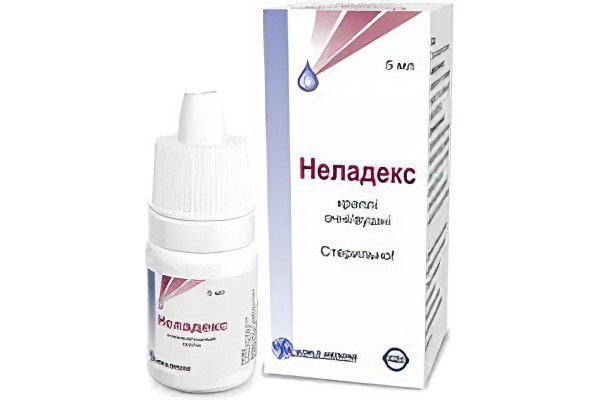
Neladeks – otitis media drops for children containing an antibacterial and anti-inflammatory component. It contains Neomycin, Polymyxin B and Dexamethasone.
Pros
The drug has an important advantage – with otitis, it is able to have a complex effect. After instillation, the inflammatory process quickly subsides due to the glucocorticosteroid included in the composition, and antibiotics at the same time effectively fight the bacterial flora that caused otitis media. Since the composition of the drops contains two antibacterial components with a different mechanism of action, the pathogenic flora is completely destroyed.
Another plus of the drug is its low absorption when applied topically. This means that the main active substances will not enter the bloodstream and will not have a systemic effect on the body as a whole.
The drug is often prescribed for the treatment of bacterial otitis media, since it is with local instillation into the ear that side effects do not develop.
The drug can be used to treat children, but only older than 12 years.
Cons
The main disadvantage of the drug is that it does not contain an anesthetic component, and with otitis media, the pain is quite intense.
After applying Neladex drops, there is a risk of developing a fungal infection, which often happens when using preparations containing a glucocorticosteroid and an antibiotic. Therefore, it is possible that an additional injection of antifungal drops into the ear is required.
After opening the drug, its shelf life is only a month, which can also be attributed to the disadvantages of drops.
Another disadvantage of Neladex is that it cannot be used to treat pregnant and lactating women. Do not use it for viral and fungal diseases of the ear, as well as against the background of tuberculosis.
It is unacceptable to use the drug Neladex for self-treatment, since if the integrity of the tympanic membrane is violated, the risk of toxic effects on the vestibular and auditory apparatus increases.
Ciprofarm
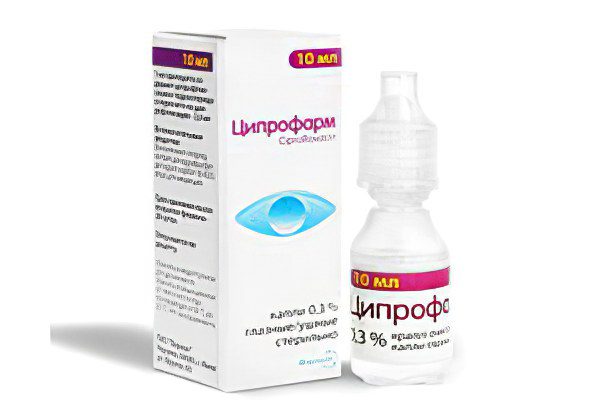
Ciprofarm – ear drops with an antibacterial effect. The drug belongs to the group of fluoroquinolones. The medicinal substance, which is part of the drops, effectively inhibits the growth and division of bacterial cells that cause otitis media.
Pros
The main advantage of Ciprofarm drops is the effective treatment of otitis, provided that it is caused by gram-negative strains of bacteria that are resistant to other antibiotics.
The advantages of the drug include the fact that it acts locally, is not absorbed into the systemic circulation and rarely provokes the development of side effects.
The undoubted advantage of Ciprofarm drops is that it accumulates in the tissues of the ear and cleanses them of pathogenic microorganisms.
The price of the drug is not high and is about 100 rubles, which is also a plus of Ciprofarm drops.
Cons
One of the disadvantages of Ciprofarm is that anaerobic bacteria are resistant to it, viruses and fungi are not sensitive. Therefore, you need to make sure that otitis was caused precisely by gram-negative flora, or by those bacteria that are sensitive to this type of antibiotic.
The drug does not contain an anti-inflammatory and analgesic component, so there will be no quick relief. However, if the flora reacts to drops, then the improvement can be noticed already 6-8 hours after the first installation.
The disadvantages of the drug include the fact that there is a risk of side effects, including: allergic reactions, ringing in the ears, soreness of the eardrum, itching in the ear canal.
Also, the disadvantages of the drug include the fact that it cannot be prescribed for the treatment of children under the age of 15 years, for the treatment of pregnant and lactating women.
Miramidez

Miramidez is an antiseptic solution based on Miramistin. This antiseptic acts on the lipids of the membranes of microorganisms and destroys them, which contributes to the disinfection of the ear with otitis media.
Pros
The main advantage of the drug is that it acts selectively, destroying the cells of pathogenic microorganisms, but does not affect the membranes of human cells.
Another advantage of Miramidez is that it effectively fights not only bacteria, but also fungi, viruses, and even hospital infectious strains.
An important advantage of the drug is its ability to have an anti-inflammatory effect. It helps to strengthen local immunity, activates regenerative processes.
The drug is not absorbed into the systemic circulation, it has an exclusively local effect. Therefore, it is allowed to be used to treat children older than a year. After consultation with a doctor, the drug can be used to treat pregnant and lactating women.
The drug has practically no contraindications for use, with the exception of individual intolerance. This can also be attributed to its pluses.
The shelf life of the drug is three years, it can be used throughout this time, regardless of the date of opening the package.
Cons
Miramidez does not contain an anesthetic component, so it will not be possible to eliminate pain in otitis media with its help.
Miramidez is more often used in combination with other antibacterial drugs for the treatment of otitis media, and not as a single agent, since its main purpose is antiseptic treatment.
Another disadvantage of the drug can be considered that after its use, a burning sensation may occur. However, after 15-20 seconds it should disappear.
Can children’s otitis media be treated without antibiotics?

Otitis is a common name for a list of inflammatory processes in the ear cavity. In this case, the cause of the disease can be both viruses and bacteria or fungi.
Most often in children, otitis media occurs as a result of a cold, SARS. And in the case when a bacterial environment also joins this disease, recommendations for taking antibacterial drugs are quite logical and justified. However, the doctor must first figure out which pathogen caused the inflammatory process.
One of the most common among children is acute suppurative otitis media. And even in this case, doctors do not always prescribe an antibiotic.
According to statistics, the use of antibacterial drugs is justified for only 1% of children.
Choosing an effective and safe drug

As a rule, when otitis occurs in infants, antibacterial drugs are prescribed immediately.
Especially if the following symptoms are observed at the time of diagnosis:
acute painful sensations that sharply negatively affect the baby’s sleep and food intake;
elevated temperature;
pale skin and other characteristics.
Most often, with acute otitis media, it is not possible to identify the pathogen that provoked the disease.
The most common semi-synthetic drug with an extensive scope is amoxicillin. The drug has a reasonable price, is available in capsules, tablets, and, which is especially important for parents of young children, in syrups.
Amoxicillin is found in Flemoxin Solutab, Amosin, Augmentin and Amoxiclav. The last two drugs are almost identical. In their composition, they have not only amoxicillin, but also clavulanic acid, which enhances the effect of the main active substance. However, almost a third of the bacteria known to physicians are resistant to the effects of amoxicillin on them. Allergic reactions to this medicine are sometimes observed.
It is widely used in the treatment of otitis and flemoxin solutab. This drug is safe for the microflora of the children’s intestines, and in terms of its effectiveness it is higher than the penicillin group.
Amosin is a drug similar to Flemoxin. Both substances do an excellent job with many types of bacteria.
Another group of effective antibiotics is macrolides (clarithromycin and roxithromycin). The latter is not used in the treatment of children under 4 years of age.
Method of application and duration of treatment

Any of the above medicines implies an individual approach, in connection with which independent treatment, inconsistent with the doctor, is, to put it mildly, incorrect.
Amoxicillin is used 3 times a day (morning, afternoon and evening) after meals. The amount of the drug used is determined by the doctor, taking into account the weight and age of the patient.
Unlike amoxicillin, treatment with flemoxin solutab does not depend on food intake. However, the amount of the drug is also determined according to the weight and age of the patient.
As a rule, after taking antibiotics, a noticeable positive effect from the treatment is observed after 2 days. However, in most cases, the minimum duration of treatment with antibacterial drugs should not be less than 5 days.









